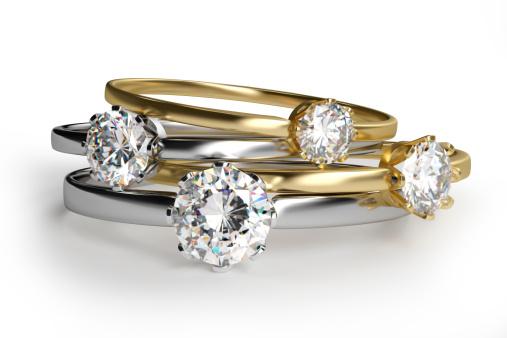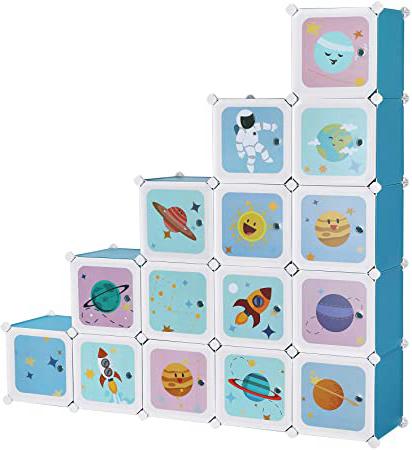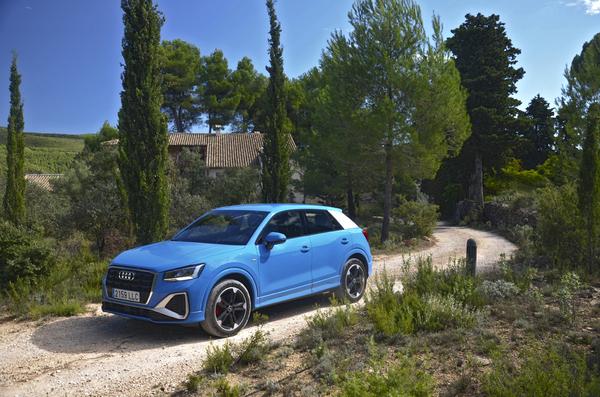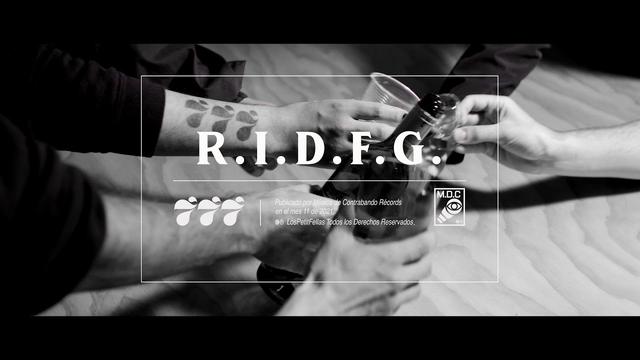Everything is prepared in the gala dining room of the Royal Palace. The splendid table with capacity for more than 130 diners is set. On the immaculate white tablecloth of fine linen, silver chandeliers and ornaments are majestically placed, the latter holding small bouquets of flowers. The dishes are ready. Today the gala tableware edged in blue and gold with the seal of the King's House has been used. The carved silver cutlery is arranged: on the left, the forks and on the right, knives and spoon. The different wines are served in five glasses, including a sparkling wine for the toast, with which the good intentions of the visit are sealed. The King and Queen sit in the center of the table, facing each other, along with their honored guests and other personalities.
On the walls, the tapestries from the workshops of George Wezeler and Wilhem Pannemaker, made of woolen, silk and gold threads, impassively look at that gala table, from the 16th century. Meanwhile, in the kitchen located on the lower floor the activity is frenetic. Much of the food has arrived guarded from one of the leading restaurants, such as Jockey, the Ritz hotel or the recently closed Zalacaín.
The menu has been supervised by Queen Letizia, following the recommendations of the visiting delegation and also her own criteria. The food is of excellent quality but at the same time recognizable: lean meat without bones, boneless fish and perfectly cleaned shellfish. No fruit that needs to be peeled is served either. Diners should not get their hands dirty and the menu should be eaten in just over an hour. A toxicological analysis is made of all the food that is tasted, which banishes the historical tasters. Only Romanian President Nicolae Ceaușescu brought his own on his visit to Spain in 1979.
A notebook records the visits of dignitaries to Spain and reflects their gastronomic tastes, the menus they have tasted and any other incident, even when they stay at the El Pardo palace. In the aforementioned notebook you can read: "February 10, 2009. For the President of Argentina, Cristina Fernández de Kirchner, a gym must be set up and she will only eat grilled chicken and fruit, with plenty of bananas."
Upon arrival, the guests go through a room that leads to the hall of columns, where they greet the Kings and their guests of honor, and from there they go to the dining room when indicated by the protocol staff. Finally, the Kings do it, who are, together with their honored guests, the last to sit down. If someone arrives late, they join the table with the change of dishes.
After the speeches, an army of waiters present the food. At a dinner in honor, the president of Uruguay and his wife offered poached eggs with green pasta, homemade sea bass fillet and yogurt cake with mango fruit. At another previous gala dinner, the Kings of Norway were served leek and celery soup, natural white asparagus with hollandaise sauce, fillets of turbot and for dessert, yogurt mousse with raspberry sauce. The menu is always accompanied by Spanish wines. At the end of dinner, most diners move to the adjoining room -the former smoking room of Alfonso XIII and his wife Victoria Eugenia-, where coffee is served, as well as liqueurs.
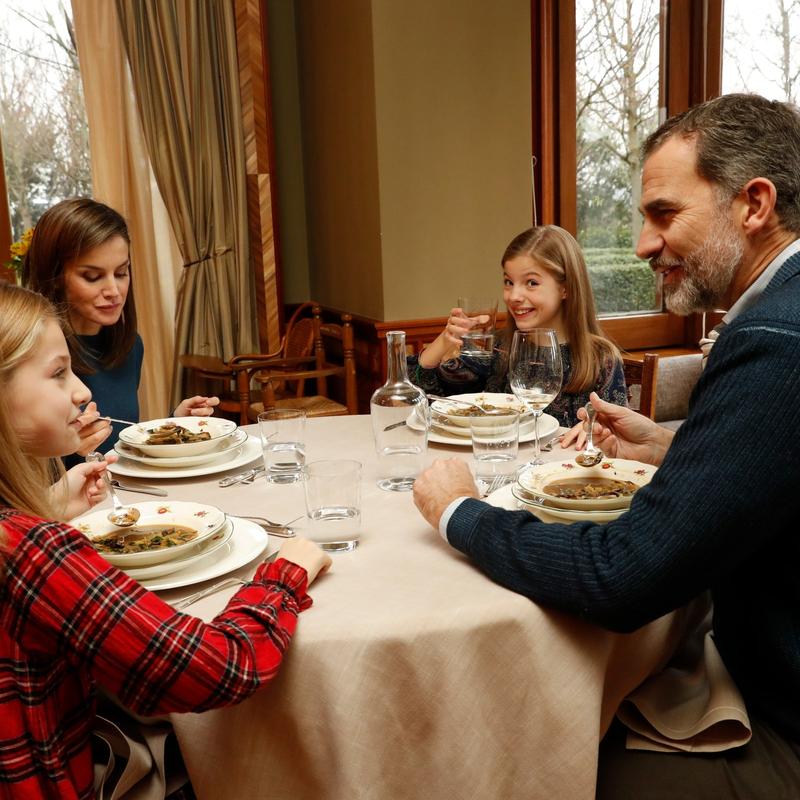
Everything has gone perfectly, the last guests have already gone through the cloakroom, have collected their coats and are saying goodbye in the parade ground of the palace, where their car picks them up by strict order.
Food at home
In the kitchens of the Zarzuela palace, not only the family is fed, but also the staff who work there in the tasks of the Headquarters of State, approximately one hundred people. However, the royal family has its own chef -formerly from the army and currently trained in the best restaurants-, who prepares simple but exquisite cuisine, resting from the excesses of banquets. On one occasion, Queen Sofía admonished a protocol member because on a trip to the Dominican Republic they were served lobster and sirloin every day. And neither she nor her sister Irene eat meat.
The family gathers around a table that seats up to 16 people, from where you can see the beautiful gardens of the Zarzuela Palace. Next to the table there is a historic sideboard where a buffet with appetizers, first courses and desserts is usually placed. From all the ingredients for making salads -lettuce, hard-boiled egg, asparagus, tomato, grated carrot or hearts of palm- to anchovy or pâté canapés, cold meat trays -where Iberian ham is never lacking- and cheese boards. There is also no shortage of stir-fried vegetables and some cold seafood and fish such as anchovies or prawns. Desserts include pastries, dairy products and always fresh fruit salad with seasonal fruits. Diners, after taking the first course from the buffet, taste the second served by a waiter. Little bread is eaten and there is always a bottle of extra virgin olive oil on the table. Queen Sofía loves sea bass, it is her favorite fish, as well as rice dishes and sweets, especially with almonds. Her favorite fruit are blackberries, which she collected in the Greek fields as a child, and she is passionate about chocolate and fruit and vegetable sorbets. Water is taken with food; the youngest, juices or soft drinks, and don Juan Carlos and don Felipe, a glass of wine.
The providers of the Royal House are anonymous. This is how Queen Sofía wanted it and this is how the current Queen Letizia maintains it. However, some are known, such as the meat supplier, a company from Tres Cantos, in Madrid; the nougats come from Luis Labrador, from Jijona, and from Casa Mira, a confectionery located on Carrera de San Jerónimo. The cheeses are often made by Miguel Romero, a family-owned cheese factory in Ocaña, Toledo. The fish and shellfish come from Marisquerías Coruñesas; the ice creams, from Livorno and Andrés Sirvent; and most of the fruit and vegetables, from Pedro Vázquez, a small, well-stocked greengrocer on Ayala street.
On Christmas Eve, dinner is early, everything is ready at seven in the evening so that the staff can go home. Stuffed turkey is served sautéed with vegetables, fish and shellfish pudding, eels, smoked salmon, Iberian ham and foie. For dessert, tropical fruits with coffee cream ice cream, chocolate delicacies and Christmas sweets, from polvorones to nougats. After dinner they take the gifts that are under the tree.
Neither the current Queen Letizia nor the previous one have stood out for being good cooks. Even Sofía has confessed that one occasion she wanted to make a soufflé for her mother-in-law, Mrs. Mercedes, and it burned. However, both queens have given ample evidence of valuing food and also the act of eating itself as a moment of family communication. "If some issues were discussed at a meal, there would be fewer conflicts between families and even in countries," the emeritus queen has commented on occasion, who has never allowed her children when they were little to watch television while eating.
The current King and Queen live very close to the Zarzuela Palace, in the Pabellón del Príncipe, a four-story house, where there is an official dining room for institutional visits and another family room, with a round table next to the windows that overlook the garden. On the same floor is the kitchen with office and in the basement there is another larger one attached to the pantries. The table and chairs in the dining room are a gift from Don Felipe's paternal grandparents, the Counts of Barcelona.
There is a person in charge of the kitchen. Doña Letizia supervises the menus every week and is the one who indicates who are the suppliers to buy from. The vegetables, which are eaten two to five times daily, are organic; his favourites, artichokes. The fruits, always in season, are eaten preferably in Macedonia. The meats are organic, usually lean, and are grilled. The fish are cooked in the same way, as well as steamed, and they are always wild. Soups and stews of legumes, cereals and vegetables are frequent. They are practically never fried or battered. At lunch and dinner you drink water. The Queen is practically teetotaler; however, don Felipe likes to eat with a glass of wine, as well as water.
Both in Zarzuela and in the Pabellón del Príncipe, dishes such as endive and walnut salad, vegetable soup, Dutch-style fish cake, mushroom cannelloni, stuffed artichokes seafood style, pasta fresca with cheese, hake with tomato and basil, legume salad or vegetable puff pastry.
A very thin queen
Much has been said about the thinness of Queen Letizia, Don Felipe has even commented on some occasion: "She eats well, but she is very active and burns everything." According to some chefs who have received the Kings in their restaurants, they like and understand avant-garde cuisine, but, indeed, the Queen eats little and is especially inclined towards vegetables. His interest in healthy cooking, which borders on obsession, is illustrated in an anecdote that took place at a meal for some awards in a Madrid hotel. When he saw the menu card, he demanded that they prepare grilled asparagus for her, instead of the dish that was planned, with which all the diners had to wait almost half an hour to start eating, with the consequent nerves of the guests. organizers and cooks. No one, at a banquet attended by the Queen, can eat before her.
Eva CeladaAuthor of the book 'The kitchen of the Royal House' (Belacqua)

